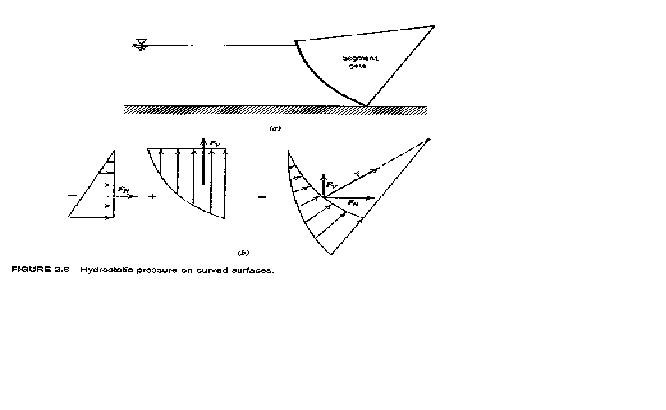Hydrostatics
-
Hydrostatic Pressure: p = weight/area = g
. y. A/A. = g .y [N/m^2]
Hydrostatic pressure:
dp/dz= -g
dp = -g.dz, or p1-p0 = -g.
(z1 –z0)
p= - g z for free surface problem
-
Hydrostatic Pressure And Forces
Horizontal And Vertical Components Of The Total Hydrostatic
Force [N]:
-
The horizontal component of the total hydrostatic
force on any surface is always equal to the total pressure on the vertical
projection of the surface . The resultant force is located through the
center of pressure of this projection.
-
The vertical component of the total hydrostatic
force on any surface is always equal to the weight of the entire water
column above the surface extending vertically to the free surface. The
resultant force is located through the centroid of this water column. The
vertical component of the total force is also called lifting force.
-
Example 1:

· Example 2.

Buoyancy : Buoyancy was discovered by Archimedes (about 250 B.C.).
· The buoyant force exerted on a
submerged or floating body is equal to the weight of the
fluid displaced by the body.
· A floating body displaces a weight
of the fluid equal to its own weight; i.e., a floating body is in equilibrium.
Fb = g V
Example 3.8, page 82


